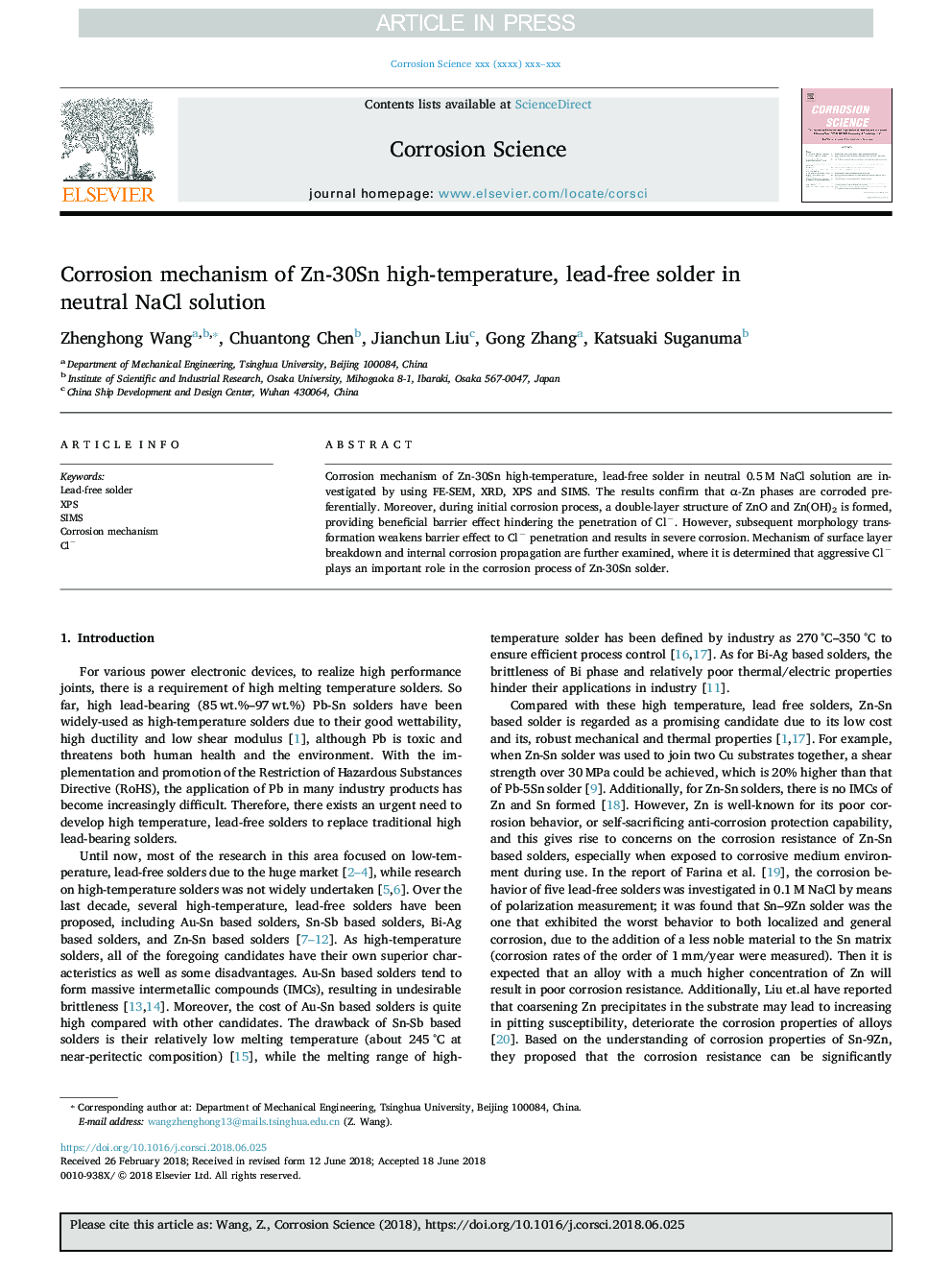| Article ID | Journal | Published Year | Pages | File Type |
|---|---|---|---|---|
| 7893136 | Corrosion Science | 2018 | 11 Pages |
Abstract
Corrosion mechanism of Zn-30Sn high-temperature, lead-free solder in neutral 0.5â¯M NaCl solution are investigated by using FE-SEM, XRD, XPS and SIMS. The results confirm that α-Zn phases are corroded preferentially. Moreover, during initial corrosion process, a double-layer structure of ZnO and Zn(OH)2 is formed, providing beneficial barrier effect hindering the penetration of Clâ. However, subsequent morphology transformation weakens barrier effect to Clâ penetration and results in severe corrosion. Mechanism of surface layer breakdown and internal corrosion propagation are further examined, where it is determined that aggressive Clâ plays an important role in the corrosion process of Zn-30Sn solder.
Related Topics
Physical Sciences and Engineering
Materials Science
Ceramics and Composites
Authors
Zhenghong Wang, Chuantong Chen, Jianchun Liu, Gong Zhang, Katsuaki Suganuma,
